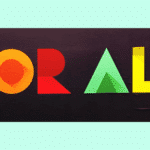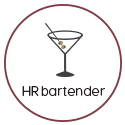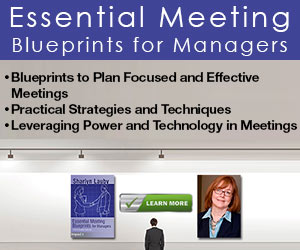Estimated reading time: 7 minutes
On July 4, 2025, the President signed into law the One Big Beautiful Bill (OBBB), also known as H.R.1. The bill has lots of things in it, but employers might not be aware that part of the bill impacts employee benefits. So regardless of any personal feelings about the bill, HR departments should want to understand how this legislation impacts their programs.
Our friends at HUB International recently did a webinar on “What the One Big Beautiful Bill Act Means for Benefits in 2026 and Beyond”. A recording of the session can be found on their website if you want to check it out. It was an interesting and educational conversation.
To help us understand more about the OBBB and its impact on employee benefits, I reached out to Cory Jorbin, Esq., national director of compliance consulting at Hub International. In his role, Cory consults with employers of all sizes to design, implement and ensure the compliance of employee benefit plans. He holds a Juris Doctorate from Cleveland State University and is a licensed attorney in the State of Illinois and admitted to practice before the U.S. Tax Court.
Cory has spoken to us before about Individual Coverage Health Reimbursement Arrangements and the Affordable Care Act. Please remember that his comments shouldn’t be construed as legal advice or as pertaining to any specific factual situations. If you have detailed employee benefit questions, they should be addressed directly with your friendly neighborhood benefits broker or labor and employment attorney.
Thanks for being here Cory. We’re not going to cover everything today, but just so readers are aware, what are some of the employee benefits related topics mentioned in the bill?
[Jorbin] The major benefits related updates in the OBBB focus on telehealth, direct primary care (DPC), and dependent care assistance programs (DCAP).
Telehealth can now permanently be covered under high-deductible health plans (HDHP) before the statutory minimum deductible has been satisfied. This effectively means that HDHPs can now once again cover telehealth at 100%. This provision is effective retroactively to January 1, 2025.
Starting January 1, 2026, direct primary care (DPC) arrangements meeting certain requirements will be treated as health savings account (HSA) compatible. This means individuals with HDHP coverage who also participate in DPC will be eligible for HSA contributions. HSA funds will also be able to be used to pay DPC fees.
Finally, starting January 1, 2026, the annual contribution limits for dependent care assistance programs (DCAP) and dependent care flexible savings accounts (DCFSA) will increase from $5,000 to $7,500. This is significant because other than a one-time exception during the COVID-19 pandemic, the contribution limit has been unchanged since 1986.
Let’s start with the first topic you mentioned – telehealth. Over the past few years, telehealth has become very popular option for both providers and patients. The OBBB did make some changes where telehealth is concerned. How do the telehealth changes in the OBBB impact employer health care plans?
[Jorbin] The OBBB now permanently allows HDHPs to cover telehealth at 100%. This presents employers who sponsor HDHPs with the choice of whether to add this coverage. This flexibility also allows HDHPs to provide telehealth at less than the full fair market value. For example, an employer could choose to provide telehealth at a nominal fee of $5 or $10 per visit. Therefore, this isn’t just a choice between not charging at all or charging fair market value.
Employers who provide telehealth at 100% or who only charge a nominal fee are likely to see increases in telehealth utilization. However increased telehealth utilization may in turn lead to better outcomes and potentially lower claims over the long term. For example, a person experiencing certain symptoms may be reluctant to go to an urgent care or their primary care physician, but they may be more likely to utilize telehealth services due to the convenience and lower cost. If a telehealth provider prescribes a course of treatment or directs the member to seek additional care, this may potentially reduce complications caused by putting off care and thus improve outcomes and reduce claims.
The next topic you mentioned is the use of direct primary care (DPC). I’m sure we could talk about this all day, but for those who might not be familiar, what is direct primary care and why should employers pay attention to it?
[Jorbin] DPC is an arrangement where a fixed fee is paid to a provider in exchange for a suite of primary care services. The fixed fee is typically charged monthly and applies regardless of how many visits a person has. The health plan is not billed for services provided by the DPC provider. I find it helpful to compare these arrangements to gym memberships …. the fee allows for access to the facility and applies whether a person takes a month off and doesn’t go at all, or if they go every day. The same concept applies to DPC.
Employers should be aware of DPC because this may be a way for health plans to help manage plan expenses related to primary care, while also growing significantly, with new providers regularly entering the market.
DPC is not the right solution for every plan, which is why employers should work with their brokers and consultants to understand whether DPC is an option for them.
Current and previous administrations have talked about the need to encourage savings, especially when it comes to health care. The OBBB has some new provisions where health spending accounts (HSAs) are concerned. Can you share some high-level details?
[Jorbin] Both the telehealth and DPC provisions referenced above relate to HSAs as they expand what is allowed under HDHPs. Effectively these provisions expand that HDHPs are allowed to cover, while also maintaining their HSA compatibility. Though employers aren’t required to cover telehealth at 100% or add DPC to their HDHPs, the ability to do this potentially makes HDHPs more attractive options for those who previously avoided HDHPs.
Notably, there had been additional HSA related provisions included in earlier versions of the OBBB; however, they did not make it to the final versions. We have seen some of these proposals in the past, such as allowing individuals with Medicare Part A to still make HSA contributions. Therefore, it is possible these may resurface at some point in the future.
Last question. The topic of employee benefits is often viewed as complex for both employers and employees. Can you suggest a couple of things that employers could do to help communicate changes to employees?
[Jorbin] As open enrollment approaches for calendar year plans, they should evaluate their communication strategies and determine whether their approach is the right fit for their populations. Here are a couple of things they should keep in mind.
- There are 5 generations in the workforce, and different generations prefer to communicate in different ways. Some prefer a hardcopy of their benefits guides, some like an electronic version, while others like everything on an app. Employers should consider whether they are communicating in the best methods to truly reach their employee populations.
- Employers should look at the changes they are making to their benefits and highlight those changes. Since it is likely impossible to highlight every single change, employers should focus on the big changes. If an employer is adding DPC, they should highlight this and make sure to communicate what this is and how it works.
Employers should be cautious about how they communicate benefits reductions (such as increasing employee deductibles) as employees will likely be displeased with this.
A huge thanks to Cory for sharing his insights with us. Don’t forget to check out Hub International’s webinar on how H.R.1 is going to impact employee benefits.
Employee benefits are complicated. And incredibly personal. I learned about employee benefits like health insurance the hard way … a car accident. And I was incredibly lucky. Someone from my company’s HR team came to the hospital and explained to my family how my benefits work. I’m not naïve, that probably wouldn’t happen today.
So as a human resources professional, I’ve always wanted to make sure that employees knew about their benefits, so they never had to learn about them the way I did. Even if we weren’t dealing with changes under the OBBB, HR departments should find multiple ways to communicate benefits and communicate them all year long, not just during open enrollment.
Make sure employee know when benefits changes occur and how their benefits work.









